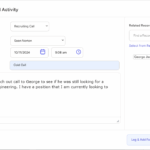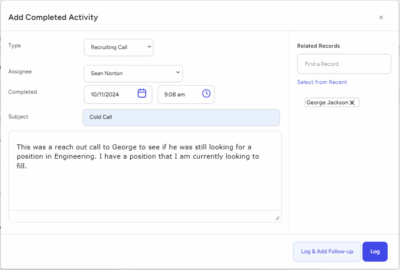There are several challenges for recruiters in a high-employment economy. While low unemployment is good for workers and the overall economy, it can be frustrating for an individual business struggling to fill positions.
With more positions open than workers to fill them, critical positions can remain open for weeks or even months, putting extra strain on your current team and slowing down your own work, increasing the risk of burnout and compromising quality.
In a low-unemployment economy, competition among employers becomes fierce. If you’re not already offering better wages and benefits, you seriously run the risk of not only struggling to find talent to fill your open positions, but you also run the risk of your current employees leaving for other opportunities.
The landscape of work and workers has changed significantly since the recession a decade ago. While jobs are now plentiful, people who would traditionally fill those jobs have changed. They’re looking for and value different things, especially the millennial generation, which makes up the largest percentage of the workforce.
Consequently, a business should make sure to have good employment recruitment strategies for recruiting in a job seeker’s market. Here are some recruitment best practices any employer can adopt when recruiting in a low-unemployment economy.
Plan Ahead
Accept that it may take longer to fill roles than you’d like. This requires recruiters to work with hiring managers to help them understand the reality behind the candidate pool. It may help to provide data that provides a realistic view of where the challenges are; hiring managers should also be patient and work with their teams to explain why roles aren’t being filled quickly, and be supportive and show their appreciation for the extra work and overtime their team will likely incur.
It’s helpful to identify when your hiring needs will likely intensify and start the process in advance. For example, if you know that the third and fourth quarter are traditionally busy months for your business, don’t start recruiting just before volume surges. Start recruiting several months ahead of time so that your new employees are onboarded and fully trained and can hit the ground running.
Promote Your Company & Culture
We can’t pretend that pay and benefits aren’t important. But people are working for so much more than that, and when they leave, it’s not typically because of those issues. This is good news: This means that you have other things to sell beyond a higher paycheck.
Ask yourself why a job seeker should work for you instead of somewhere else. Work on your employer brand and highlight things like your culture, work environment, and values. Do you have a cool, fun office? Does your team or company regularly volunteer for charity, or is there a social benefit to the work you do? Do you promote from within, providing great advancement potential? Do you have tuition reimbursement or continued training in order to keep your current workforce engaged? Sell those things to candidates. Use social media like Glassdoor and LinkedIn, as well as your own website, and post videos and pictures of a typical day within your organization to showcase your employees and your environment. Having a strong employer brand is the start to becoming an employer of choice.
Have A Database of Passive Candidates
It’s common for recruiters to only solicit active candidates, those currently searching for a job, by posting jobs on sites like Indeed and Glassdoor and then waiting for the resumes to come in. In a low-unemployment economy, this won’t get you as far as you need to go.
Think of everyone as a potential candidate. There are many “passive candidates” out there: These are folks who aren’t necessarily unhappy with their current positions or actively searching, but who may be a bit discontented or ready for a new challenge. You won’t know until you ask. Utilize platforms and tools like LinkedIn and a good Applicant Tracking System (ATS) to reach out to and track passive candidates. Even if they’re not a candidate right now, they may be soon. Additionally, if they’re not a candidate at all, they may know someone who is.
Have Competitive Wages and Benefits
Competitive wages and benefits are important; there’s no getting around this one. It’s even more helpful if you’re in the position to offer things like sign-on bonuses and relocation assistance. However, if you’re paying less than your competition and there isn’t much you can do about it, you need to make it up elsewhere. Sell your great benefits package, and if you aren’t competitive there either, then focus on intangibles such as a work-from-home policy, a dog-friendly workplace, flexible schedules, free coffee, or a casual dress code.
Don’t Delay
When you have an interested candidate, chances are, you’re not the only employer they’re talking to. Time is of the essence when competition for talent is tight. Job seekers don’t like waiting to hear back, and the quicker you can get back to them, the more likely they are to see the process through. A good ATS that allows you to communicate within the tool can help make this possible, especially for recruiters and hiring managers juggling a high volume of open requisitions.
Look for Candidates in New Places
In the past, you may not have had to get creative with where you sourced candidates. Now is the time to look at new candidate pools. Look at people who face barriers to employment such as prior homelessness, a criminal record, or disabilities. Consider partnering with an alternative staffing firm or a non-profit to see if you have opportunities that may be a match. You also may want to consider whether partnering with freelancers or other workers in the “gig economy” makes sense for your organization.
Everyone is a Recruiter
It may take a bit of change management within your culture, but begin to engage your current employees in a way that helps them understand that everyone is a recruiter. A recruitment best practice especially helpful during a low-unemployment economy is the understanding that every employee is a representative of the organization and should want to find top talent to work alongside. Ask employees who they know, who they’ve worked with before, who they’ve gone to school with, and who they would like to have on their teams. Offer referral bonuses if you can.
You’re Always Hiring
Regardless of the number of requisitions you have open, you’re always hiring. This is especially true of those roles that come open often, but no matter what, you never want to miss the chance of engaging with an active or passive candidate. If you don’t have an opening now, you will down the road. You want to engage with them in some way and ideally have their resume in your ATS database so that when the timing is right, they already know who you are.
In a low-unemployment economy, it’s essential to engage in new employment recruitment strategies. Beyond being competitive with wages and benefits, look at ways to sell your culture and improve your employer brand, be sure to engage and retain your existing employees by offering development opportunities, look for new employees in untraditional places, and always keep building a database of passive candidates.
For information on how an ATS can effectively position you for success in a job seeker’s economy, contact Top Echelon Recruiting Software for a free demo.








